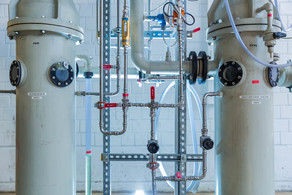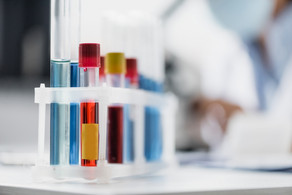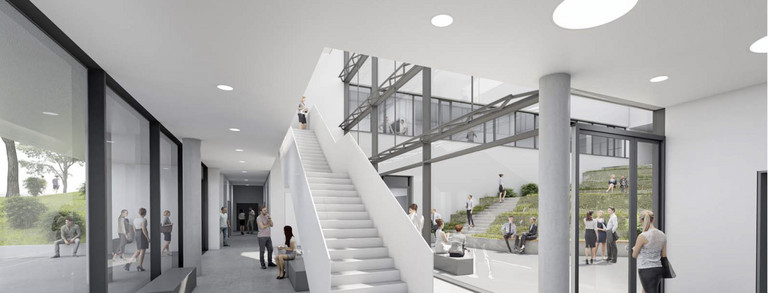Core labs
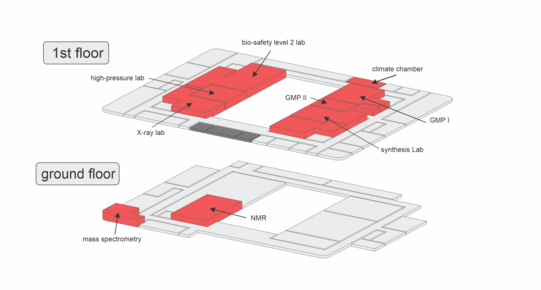
The core facilities include special laboratories located on the ground floor and the first floor of CALEDO, which house the majority of the cutting edge analytical equipment. These special laboratories are be available to all working groups in CALEDO as well as (upon application to the CALEDO management) to the working groups of TU Dortmund and the neighboring research institutions. The special laboratories and large equipment are led and operated by experienced personnel with proven expertise.
Core labs

This 80 sqm laboratory in CALEDO hosts an 800 MHz NMR device. Due to the special structural requirements, particularly the load-bearing capacity and vibration-free nature of the floor, as well as the accessibility of the premises for magnet installation, this laboratory is located on the ground floor of CALEDO. The laboratory features helium recovery, cooling water and compressed air lines. In addition to the room for the NMR magnets itself, a control station and a sample preparation laboratory with fume hood are available, where NMR samples can be prepared on-site.
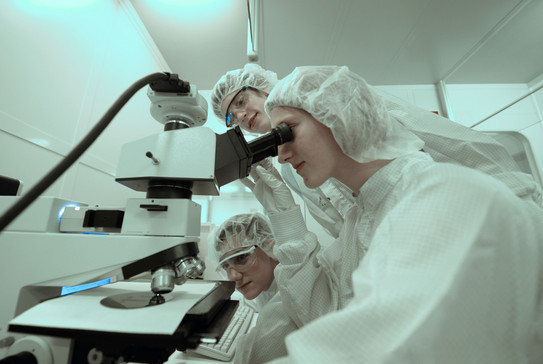
This 50 sqm lab will host two mass spectrometry systems (one GC-MS and one LC-MS systems). This classical mass spectrometry is used in all CALEDO research areas. Equipment will be made available to all participating working groups. The coupling of gas chromatographs (GC) or liquid chromatographs (LC) to a mass spectrometer allows for the analysis of both volatile and non-volatile samples/solutes.

This 200 sqm lab is build according to the bio safety level 2 standard. It is used for work with genetically modified organisms that fall under the safety classifications S1 and S2. State-of-the art equipment for the integrated development of enzymes and liquid phases include: a robotic platform for protein engineering for automated screening of enzymes and liquid phases, a Tims-TOF system for analyzing samples from the genetic engineering work, a preparative chromatography for purification of synthesized proteins and enzymes, and a parallel bioreactor system for biocatalysis under industry-like conditions (enzymes and whole-cell biocatalysts) and for the production of enzymes.

In this 50 sqm high-pressure laboratory, the effect of pressures up to 10 kbar on (predominantly biochemical and pharmaceutical) fluid systems is investigated. It houses a kinetic FTIR spectroscopy and dynamic fluorescence spectroscopy/microscopy. They are used, for example, to study the influence of pressure on the kinetics of biocatalytic reactions or the polymorphism of pharmaceutical substances, as well as to determine the folding, denaturation, and aggregation of proteins, or to determine the pressure stability of proteins as a prerequisite for their use in enzyme reactions.

The 60 sqm X-ray laboratory in CALEDO will house the XRD diffractometer. It is primarily used for studies which involve developing liquid phases that prevent the crystallization of active ingredients. For this, it is absolutely essential to analyze which liquid phase compositions can prevent or lead to crystallization and which polymorphs or hydrates/solvates are formed.
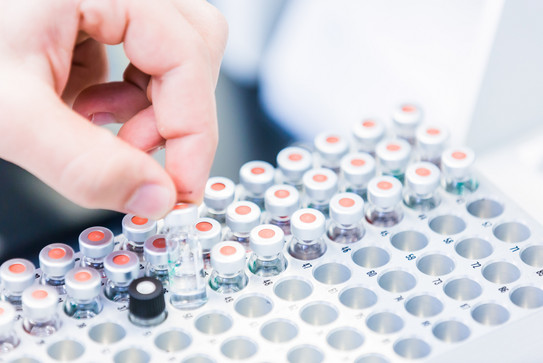
Some studies, such as the biological availability of highly potent drugs involves compliance with requirements for air supply (temperature, humidity, particle load, and microbial contamination), room division (room classes, locks for personnel and materials, and changing areas), and room equipment (surface conditions of walls, windows, and floors).
Two GMP-compliant laboratories with different cleanroom air requirements are available in CALEDO (GMP I - cleanroom class GMP D; GMP II – cleanroom class GMP C). GMP I and GMP II will host SEC-MALS (MALS, UV, RI), FFF-MALS/DLS Plate Reader, as well as CG-MALS and a confocal Raman spectroscope. For the most part these will serve for the analytics of pharmaceutical and biopharmaceutical formulations e.g. investigation of diffusion processes (e.g., of water at high relative humidities) into pharmaceutical formulations, phase separation, and the kinetics (of unwanted) crystallizations in amorphous formulations, as well as the determination of the type and structure of micelles.

A 60 sqm synthesis laboratory is operated in CALEDO, which is available to all working groups. Here, work on I Reactions in chemical processes will be conducted with the goal of replacing highly toxic and environmentally harmful solvents. A reactor cascade is located here for the efficient execution of chemical syntheses under flexible reaction conditions.




